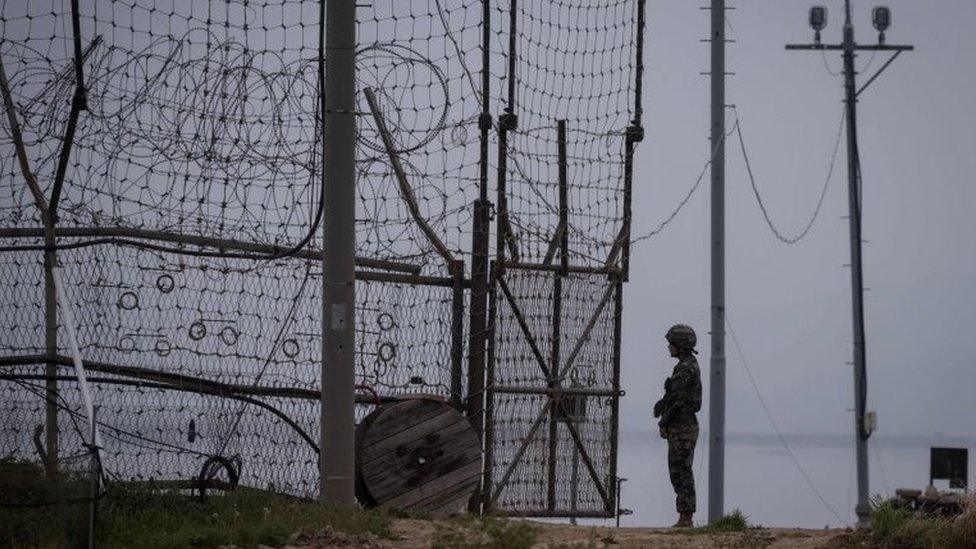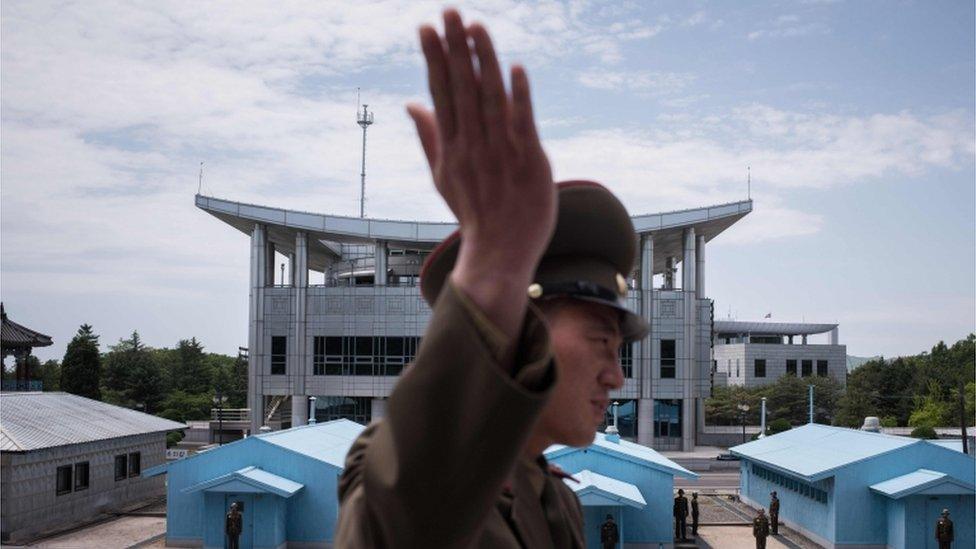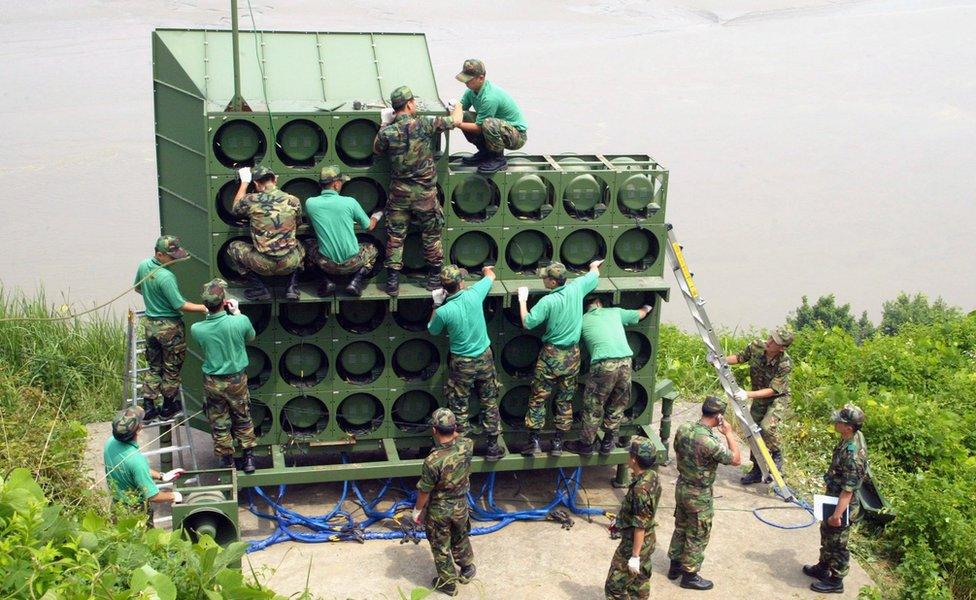How a North Korean soldier defected across the DMZ
- Published

The border area between North and South Korea is heavily protected
A North Korean soldier defected to the South by crossing the heavily protected Demilitarised Zone (DMZ) separating the two sides.
This is the fourth defection by a North Korean soldier via the DMZ in the past three years.
But how do you get over one of the world's most heavily guarded strips of land without being spotted?
What happened?
The soldier was shot and injured by his own military as he crossed to the South Korean side of the Joint Security Area (JSA) in the village of Panmunjom.
North Korean troops shot at him 40 times, and he was hit five times - but he made it across and was found under a pile of leaves.
The JSA is the only part of the DMZ where soldiers from the north and south stand side by side. South Korea's Yonhap news agency reported he was a low-ranking soldier.

The fortified border is almost impenetrable
His defection came six months after the last. In June, another North Korean soldier approached a South Korean guard post to surrender.
Before then, a North Korean soldier defected via the DMZ in September 2016 and before that, in June 2015.
In 2012 two soldiers from the North made it through the dense security net and handed themselves over.
Is it dangerous to cross the DMZ?
Yes. The DMZ is a strip of land 250km (155 miles) long and 4km (2.5 miles) wide that runs across the Korean Peninsula, heavily mined and fortified with barbed wire, rows of surveillance cameras and electric fencing.
It is also closely guarded by tens of thousands of troops on both sides, making it almost impossible to walk across.

Three defectors successfully crossed the military demarcation line in the last three years
Swathes of bare land are littered with large rocks and anti-personnel landmines.
If the North Korean military spot movements across the area, it is likely that they will open fire.
The border and its fortifications have been in place since the Korean War ended in an armistice in 1953. North and South Korea remain technically at war as the fighting did not end with a peace treaty.
Since he took power in 2011, North Korean leader Kim Jong-un is believed to have ordered the tightening of border controls between the two sides and with China, including by laying more landmines.
In recent months, North Korea has also flown drones over the border, mainly for reconnaissance purposes in the wake of South Korea's deployment of the US anti-missile defence system, known as the Terminal High Altitude Area Defense (THAAD).
How often do North Koreans defect?
On average, around 1,000 people from the North flee to the South each year but only a handful picked this highly dangerous escape route across the military demarcation line (MDL) during the last decade.
The number of North Koreans defecting to South Korea has started to drop. From January to August 2017, 780 North Koreans escaped to South Korea, a fall of 13% compared with the previous year, according to officials in Seoul., external
Successful defection cases prove that it can be done. However nobody knows the number of unsuccessful attempts made by desperate defectors-to-be.
If spotted and arrested by the North Korean military, those trying to cross the DMZ would certainly be taken to a detention centre to be interrogated. They could be tried and sentenced to lengthy terms in labour camps.
One of the two North Korean defectors in 2012 had to kill his platoon commanders before fleeing.
But the crossing is sanctioned by both sides, not only the North.
In July 2012, South Korean officials arrested an activist, Ro Su-hui, after he walked back across the border from visiting the North to promote reunification.
The first South Korean unification activist to cross the border was Lim Su-kyung, who visited North Korea in 1989 and was jailed after returning home.

Both sides blast music and propaganda across their shared border
What happens in the case of successful defection?
Defectors usually approach South Korean border guard posts to express their intention to defect. But there are also telephones on the South Korean side so those who have fled from the North can call seeking help.
Most North Korean defectors choose to flee using easier routes than over the DMZ.
Seoul says more than 30,000 North Koreans have defected to the South since the end of the Korean War, the majority via China, which has the longest border with the North.
Some defectors travel on to countries in Southeast Asia and elsewhere in the hope of resettling in South Korea or a third country.
After reaching the South, most North Korean defectors are first held at an interrogation facility to screen for potential spies and then put through a state resettlement programme.
They can get help from the government and there are also non-profit and non-governmental organisations that seek to make the transition easier for them. However this is a process that often proves not only difficult but also traumatic.
Some escapees find that escaping North Korea is just the start of their journey. They then have to try to cope with the brutality of the regime, and the years of physical and psychological hardship they faced.
- Published29 September 2016

- Published15 June 2015

- Published5 March 2014
